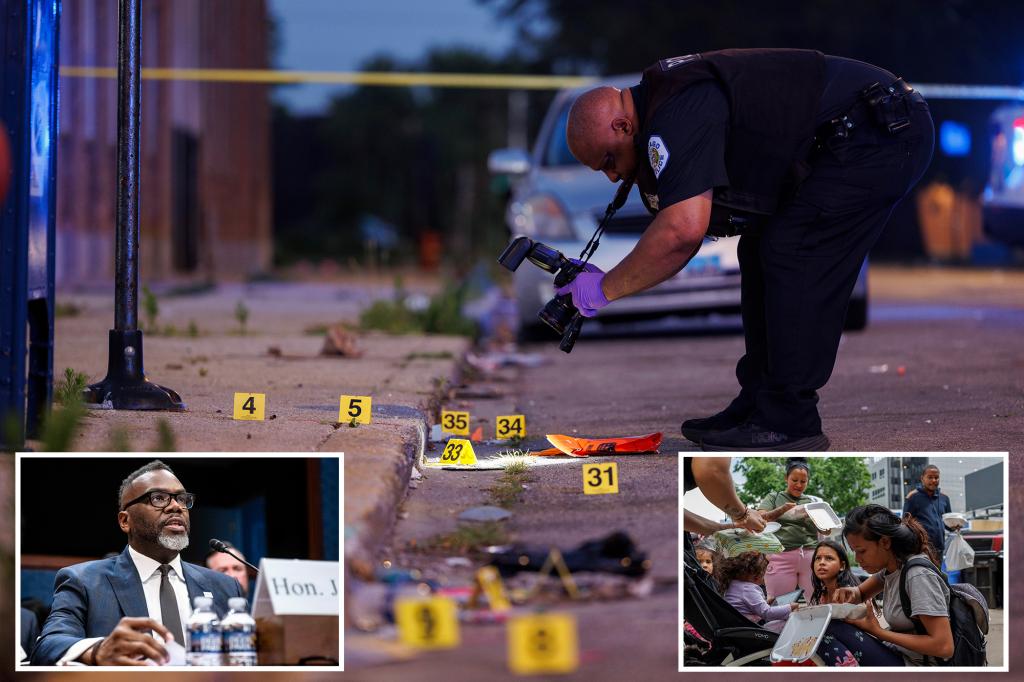Chicago’s Struggle: Understanding America’s Murder Capital
Chicago has long been a city synonymous with resilience and vitality; however, it also grapples with a reputation that has cast a long shadow over its vibrant culture—being labeled as America’s murder capital. This daunting title is not merely a statistic but a reflection of the complex interplay of social, economic, and political factors that contribute to violence in the city. As the city continues to confront its struggles, a contentious political debate has emerged regarding police funding and public safety measures, raising critical questions about how best to protect communities while fostering trust between citizens and law enforcement.
The Reality of Violence in Chicago
In recent years, Chicago has seen fluctuations in its crime statistics, particularly in terms of gun violence and homicide rates. While the city has made significant strides in reducing overall crime, the persistent issues surrounding gun violence and gang activity remain. According to data from the Chicago Police Department, there were approximately 800 homicides in 2021, a number that has sparked outrage and concern among residents and leaders alike.
The factors contributing to this violence are deeply rooted in the city’s socio-economic landscape. High levels of poverty, unemployment, and systemic inequities have created an environment where crime can flourish. Moreover, gang violence, often fueled by the illicit drug trade, has exacerbated the situation, leading to tragic outcomes for many families and communities.
The Budget Battles: Police Funding and Community Needs
As Chicago confronts its reputation and the realities of violence, the debate over police funding has intensified. Advocates for increased police budgets argue that enhanced resources are crucial for effective law enforcement and public safety. They emphasize the need for more officers on the streets, advanced technology, and better training programs to combat crime effectively.
Conversely, critics of the current funding model argue that pouring more money into police departments does not address the root causes of violence. They advocate for reallocating funds towards community programs that can help tackle issues like mental health support, education, and job training—essential services that could potentially prevent crime before it occurs.
- Arguments for Increased Police Funding:
- More officers can lead to a greater police presence, which may deter crime.
- Advanced technology can enhance crime-solving capabilities.
- Improved training can lead to better community relations and more effective policing.
- Arguments for Reallocation of Funds:
- Investing in community programs addresses root causes of crime.
- Building trust between police and communities can lead to more effective policing.
- Preventative measures can reduce the need for policing in the long run.
The Challenge of Building Trust
One of the most significant challenges in addressing Chicago’s violence is the erosion of trust between communities and law enforcement. Historical injustices, including racial profiling and police misconduct, have led to deep-seated mistrust among many residents, particularly in marginalized neighborhoods. This mistrust complicates policing efforts and can lead to reluctance in cooperating with law enforcement, creating a cycle that perpetuates violence.
Efforts to bridge this divide have included community policing initiatives, which emphasize collaboration between officers and residents. These programs aim to foster relationships, enhance communication, and build community resilience. However, the effectiveness of these initiatives often hinges on adequate funding and support from city leadership.
Community-Led Initiatives and Their Impact
In response to the challenges posed by violence and distrust, many grassroots organizations in Chicago have emerged, advocating for community-led initiatives. These organizations focus on various aspects, including violence prevention, youth engagement, and mental health support. They offer valuable programs that not only aim to reduce crime but also promote healing and reconciliation within affected communities.
Examples of successful community-led initiatives include:
- CeaseFire: A program that employs a public health approach to violence, focusing on interrupting cycles of violence and promoting peace.
- Youth Programming: Organizations that provide mentorship and employment opportunities for at-risk youth, diverting them from gang involvement.
- Mental Health Services: Community clinics that offer mental health support, addressing trauma and its impact on violence.
The Role of Local Government and Policy Makers
Local government plays a pivotal role in shaping policies and budgetary decisions that impact both policing and community safety. City leaders must navigate a complex landscape of competing interests, balancing public safety concerns with the need for social investment. As public outcry over crime continues, there is pressure on policymakers to respond effectively while also considering the long-term implications of their decisions.
The question remains: how can Chicago move forward to foster a safer, more equitable city? This will likely require a multifaceted approach that combines adequate funding for law enforcement with robust investment in community resources. Policymakers must engage in open dialogue with community leaders, residents, and law enforcement to develop comprehensive strategies that prioritize both safety and trust.
Looking Ahead: A Vision for Change
As Chicago navigates its struggle with violence and budget battles, there is hope for change. Many residents, community leaders, and organizations are committed to working together to create safer neighborhoods. By fostering collaboration and understanding, Chicago can begin to dismantle the barriers that have historically divided communities and law enforcement.
In conclusion, while Chicago’s title as America’s murder capital poses significant challenges, it also presents an opportunity for transformative change. Through thoughtful policy decisions, increased community engagement, and a commitment to addressing the root causes of violence, the city can work towards a future where safety and trust coexist harmoniously. The journey will be arduous, but with collective effort and resilience, Chicago can emerge stronger from its struggles.
See more BBC Express News

